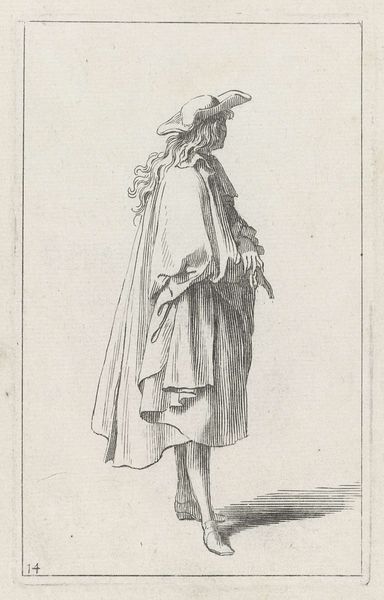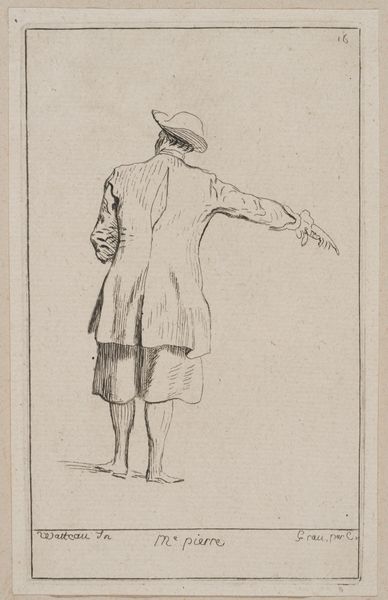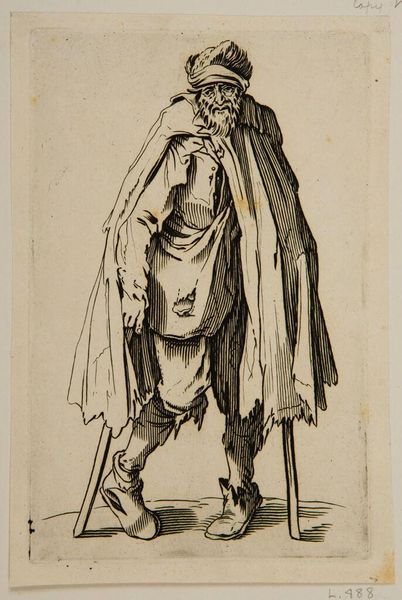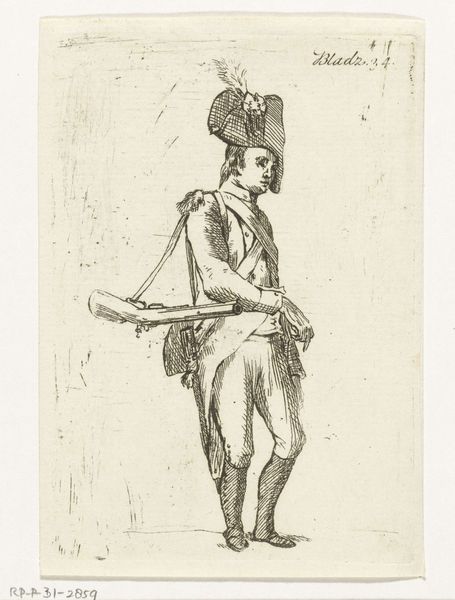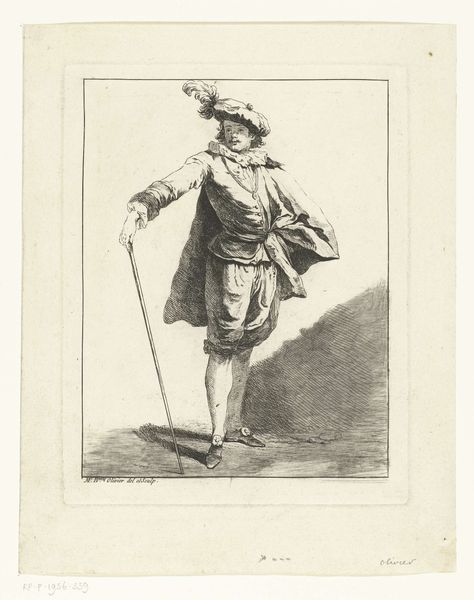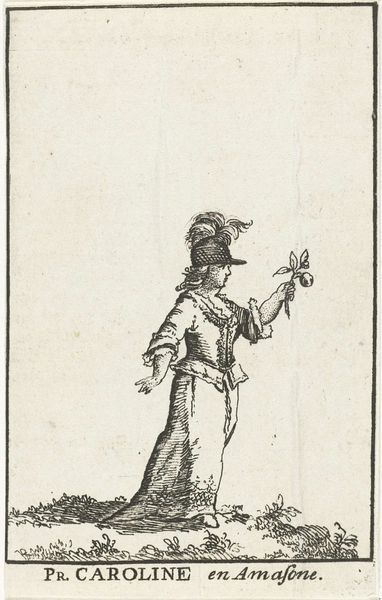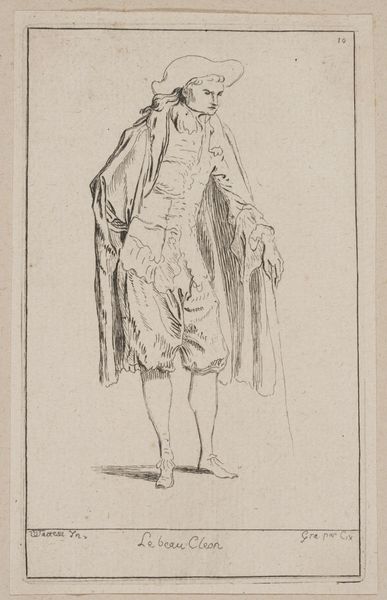
drawing, pen, engraving
#
portrait
#
drawing
#
comic strip sketch
#
quirky illustration
#
quirky sketch
#
baroque
#
pen illustration
#
cartoon sketch
#
personal sketchbook
#
pen-ink sketch
#
sketchbook drawing
#
pen
#
storyboard and sketchbook work
#
sketchbook art
#
engraving
Dimensions: height 132 mm, width 70 mm
Copyright: Rijks Museum: Open Domain
Jan de Beijer made this etching of a standing man with a ponytail wig some time in the 18th century. The method of etching relies on the corrosive power of acid to create lines in a metal plate, which then accepts ink and transfers the image to paper. This was a key technique of reproduction in the hand-press era, allowing for relatively quick distribution of images. The material economy of etching is worth considering; copper was a valuable commodity, and the labor involved in preparing the plate, applying the acid-resistant ground, and then making the image required considerable skill. The resulting print, however, could reach a wide audience, far beyond the elite circles who could afford original paintings. Here, the figure's elaborate wig and tailored coat speak to a culture of conspicuous consumption, readily available through the printmaking process. It democratizes access to images, but also subtly reinforces the social hierarchies of the time. Understanding these prints means appreciating the means of production, and their place within a broader economy of art and society.
Comments
No comments
Be the first to comment and join the conversation on the ultimate creative platform.


